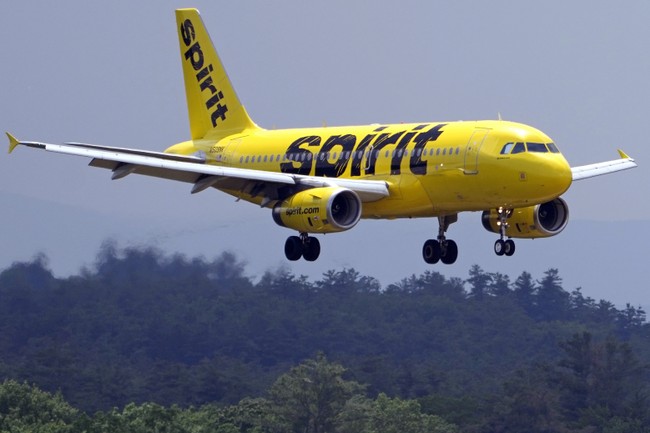
This is very much a local story, believe it or not.
I’ve kind of always had a hard spot in my heart for Boeing. It originally had to do with growing up with a Lockheed-loving Daddy, who sang the praises of the Electras and then L-1011s he flew for the majority of his time as an Eastern Airlines captain.
Those were his babies, and he was a loyal man.
When I got to El Toro, I was privileged to work on one of the single, most ungainly but lethal and unbreakable aircraft ever to take flight, the A-6E Intruder. It did its Grumman ironworks manufacturer proud, and I resented the hell out of having to watch that last bird make that final flight into the sunset toward the boneyard when lobbyist and McDonnell-Douglas (which became Boeing) money won out, and the F-18 two-seaters took her place.
Hated those guys.
My Daddy was skeptical of Airbus when they started, as he was of most things European – swore he’d never fly in one.
But they have come a long way, and now, when we head to Europe to see Ebola, I check the equipment for the flight to make sure it’s an Airbus scheduled for that long leg. Having taken both, the Airbus beats the Boeing all to bits, comfort-wise, for nine hours of forced captivity.
What also soured me on Boeing was the ‘new’ Air Force tanker contract controversy.
Now, pay attention to the dates: this article is from 2011 talking about Boeing winning the contract after a sequence of events that started in 2008. A lot of malarkey went on.
…In the wake of 9/11, the late Ted Stevens, one of the most powerful men in the Senate (and recipient of campaign cash from Boeing), slipped in a provision to a Defense spending bill to lease planes from Boeing; like all leases, it would cost more over the long run, but America was at war and the commercial airline market was collapsing, so it was explicitly presented as a practical bailout of the manufacturer.
The expensive leasing deal put John McCain on Boeing’s tail, but it might have gone through had the dragon lady–a hard-nosed deputy assistant secretary for acquisitions named Darleen Druyun–not conducted job negotiations with a Boeing executive during the procurement process. She got a $250k job with a $50k signing bonus; Boeing’s end of the deal improved by $6b; and after the story came out, she got nine months in jail, and Boeing’s CEO resigned.
That drama allowed EADS, a big European conglomerate that includes Airbus, to get in on the deal with the help of Northrop Grumman. They pledged to build large portions of the tankers in the US, settling on sites in the anti-union South to compete on cost with Boeing’s unionized employees, and courted southern Republicans like Jeff Sessions and Richard Shelby, in whose state of Alabama EADS would build a big manufacturing plant.
In short, EADS proposed a bigger, more fully featured plane; Boeing proposed a smaller, more efficient one. That gets us up to 2008, seven years after the initial push for the tankers and five years after it fell apart. EADS won. It’s over, right?
Not hardly. By this time it had become a partisan issue, and news that the Air Force would work with a European company over an American one entered the presidential race. Barack Obama and Hillary Clinton called the deal into question, as did Nancy Pelosi and–that guy again–Rahm Emanuel, who both blamed John McCain for sending American jobs overseas. (After yesterday’s news, critics are unsurprisingly charging the Pentagon with protectionism; Shelby is blaming “Chicago politics,” because we run everything in these parts.)
Boeing filed a hail-mary protest with the General Accounting Office, and won (PDF). At this point, the 2008 elections were a few months away, and news had come out that John McCain’s top fundraiser was an EADS lobbyist, and the process had gotten politically toxic. So the Pentagon issued a new RFP, which was concluded yesterday.
Boeing prevailed after a far superior offer from the Airbus/Grumman EADS consortium had been accepted and then dismissed. EADS lost its appeal, too.
Oh, well.
There were some very disappointed people in Alabama, to be sure, because they knew that the failed tanker deal meant Airbus would no longer be coming to Mobile. And the city, long in the desultory throes of stagnation and slow decline, was crushed.
Until Airbus surprised everyone and decided to go ahead and build airplanes in America.
We were all thrilled.
The company refurbished facilities at the Air Force’s long-neglected and abandoned Brookley Field on the Mobile River, just south of downtown.
They opened officially in 2015 and have been building American-made A319, A320, and A321s ever since.
Last year, plane number 500 rolled off the Mobile, AL assembly line.
What about that tanker the Air Force was supposed to get from Boeing?
‘Cautionary tale’: How Boeing won a US Air Force program and lost $7B
…Indeed, when Boeing first won the deal to build what’s now known as the KC-46, the defense contractor said it would use a “low-risk approach,” basing its design on the existing Boeing 767 commercial airplane. The contract was firm-fixed-price, meaning Boeing was on the hook if costs ran higher than expected.
…Nearly 13 years later, Boeing has absorbed $7 billion in cost overruns, far more than the contract value of $4.9 billion. For years, the tanker, designed to refuel aircraft in flight, has been plagued by delays, production errors and a faulty vision system that required a complete redesign.
While Boeing has paid the financial price, the company and the Air Force have spent years trying to make the program work. The initial contract award called for the combat-ready tankers to arrive in August 2017; the first arrived in January 2019.
In the years that followed, the KC-46 program was beset by further delays, including production line problems that regularly stalled deliveries and an underperforming vision system. That system is years behind schedule and expected to come in October 2025.
Meanwhile, the A planes just keep rolling off that American-made line in Alabama that nobody wanted.
Airbus has had a good Paris airshow this week, too, racking up some decent deals. To be fair, both companies have significant backlogs of aircraft to fill, and it has been a challenge.
Airbus orders and new models have taken center-stage at this year’s Paris Air Show, as its U.S. rival Boeing spends yet another major industry event keeping a low profile due to turmoil at the business.
Airlines and manufacturers use air shows as an opportunity to make splashy aircraft purchase announcements following months of negotiations, some of which will be wrapped up at the event. Airbus had racked up nearly $21 billion as of Thursday morning, per a Reuters calculation.
That included 132 firm orders on Monday, from customers including Saudi leasing firm AviLease, Japan’s ANA and Poland’s LOT, versus 41 for Boeing and 15 for Brazil’s Embraer, according to a tally by aviation advisory IBA.
They’re soon going to have three assembly lines cranking away along the Mobile River.
Right here.
So, this was just a little FYI that while Boeing sucks a lot of air out of the room when talking about big planes, we do have lots of other American-made jumbo jets in the sky that probably should have ‘Made in Alabama’ proudly scribbled somewhere inside the skin.
I always think that’s pretty darn cool.

















